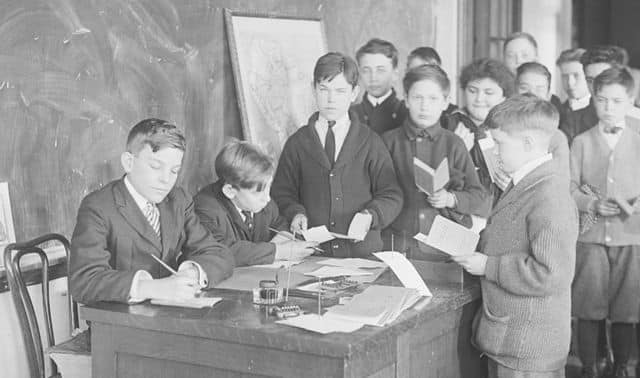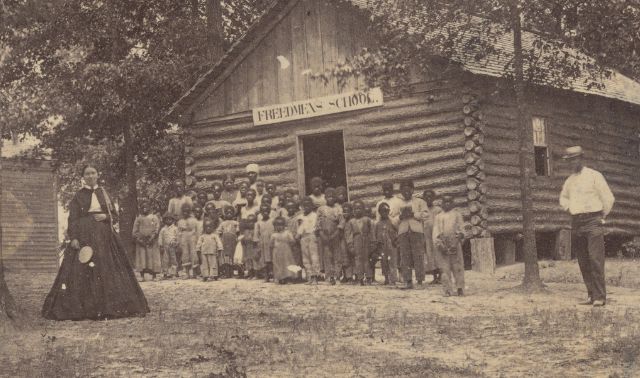Do you have a Mason in your family tree? Many clans can claim links to the Freemasons — after all, it’s the world’s oldest and largest fraternal society.
If your ancestor belonged to this group, knowing how it developed and how it’s organized will help you investigate your family’s involvement.
Although Freemasonry originated with actual (“operative”) stonemasons, today the group unites men who share a philosophy — encompassing brotherhood, respect, charity, citizenship and morality — rather than a trade. They’re known as “accepted” Masons, or officially, Free and Accepted Masons. (You’ll find a good discussion of Freemasonry at <” target=”_blank” rel=”noopener noreferrer”>www.bessel.org/abbrevs.htm>.)
Most lodges’ records don’t go back as far as Freemasonry’s 18th-century origins. A few records from the 1700s and 1800s still exist, but many have been lost to fire — for instance, all of the California Grand Lodge’s records burned after the 1906 San Francisco earthquake, and the Arkansas lodge’s went up in flames in 1918. If the records no longer exist, look for the lodge’s published history. Depending on how your ancestor was involved with the lodge, you may find him mentioned.
If your ancestor’s lodge still has records from his lifetime, you may be able to get his application. Keep two things in mind: First, a man could petition a lodge for membership after he turned 21, but he usually didn’t do so until he was in his 30s. Also, the application probably won’t include his parents’ names. Prior to 1900, it asked only for the name and age of the applicant, along with three references.
Web Sites
• Complete List of Fraternal Organizations
<www.exonumia.com/art/society.htm>
• Fraternal Organizations Mailing Lists
<lists.rootsweb.com/index/other/ fraternal_organizations>
• Fraternalism in America
• Masonic Info
• A Pictorial Catalog of Commemorative Flagholders & Plaques of Organizations & Military
<www.rootsweb.com/~srgp/flaghold/flaghold.htm>
• RootsWeb’s Guide to Tracing Family Trees — Fraternal Organizations and Associations
<www.rootsweb.com/~rwguide/lesson18.htm>
Books
• American Society Medals by Lee E. Bishop Jr. and Robert Elliot II (Bishop & Elliot)
• Coil’s Masonic Encyclopedia by Henry Wilson Coil (Macoy Publishing & Masonic Supply Co.)
• A Dictionary of Secret and Other Societies by Arthur Preuss (Herder Book Co.)
• Early History of Fraternal Beneficiary Societies by M.W. Sackett (Scribner’s)
• Encyclopedia of Associations: National Organizations of the US, 41st edition (Gale Research)
• Fifty Million Brothers: A Panorama of American Lodges and Clubs by Charles W. Ferguson (Farrar and Rinehart)
• Fraternal Organizations by Alvin J. Schmidt (Greenwood Press)
• Freemasonry and American Culture, 1880-1930 by Lynn DuMenil (Princeton University Press)
• Handbook of Secret Organizations by William Whalen (Bruce Publishing Co.)
• A History of Secret Societies by Arkon Daraul (Pocket Books)
• The International Encyclopedia of Secret Societies & Fraternal Orders by Alan Axelrod (Checkmark Books)
• Masonic Organizations and Allied Orders and Degrees by Harold V. Voorhis (Henry Emmerson)
• Secret Ritual and Manhood in Victorian America by Marck C. Carnes (Yale University Press)
• Secret Societies: A Cultural Study of Fraternalism in the United States by Noel P. Gist (University of Missouri Press)
• Statistics of Fraternal Benefit Societies, 106th edition (National Fraternal Congress)
Active Societies
• Benevolent Protective Order of Elks of the USA
2750 N. Lakeview Ave. Chicago, IL 60614 (773) 755-4700 <www.elks.org>
• B’nai B’rith International
2020 K St. NW, 7th floor Washington, DC 20006 (202) 857-6600 <bnaibrith.org>
• Fraternal Order of Eagles International Headquarters
1623 Gateway Circle S. Grove City, OH 43123 (614) 883-2200 <www.foe.com>
Freemasons
The Freemasons do not have a national headquarters; each US state has a Grand Lodge, though. For a list of Masonic libraries and museums, visit <bessel.org/maslibs.htm>. If your ancestor belonged to the York Rite, visit <www.yorkriteusa.org> and click on US Grand York Rites for a link to your state’s Grand Lodge.
• Independent Order of Odd Fellows
422 Trade St. Winston-Salem, NC 27101 (336) 725-5955 <www.ioof.org>
• Lions Clubs International Headquarters
300 W. 22nd St. Oak Brook, IL 60523 (630) 571-5466 <www.lionsclubs.org>
• Modern Woodmen of America
Gail Ann Levis, historian 1701 First Ave. Rock Island, IL 61201 (309) 786-6481 <www.modern-woodmen.org>
• Moose International
Route 31 Mooseheart, IL 60539 (630) 966-2209 <www.mooseintl.org>
• National Fraternal Congress of America
1240 Iroquois Ave., Suite 300 Naperville, IL 60563 (630) 355-6633 <www.nfcanet.org>
• The Patrons of Husbandry (Grange)
1616 H St. NW Washington, DC 20006 (202) 628-3507 <www.grange.org>
• Shriners of North America International Headquarters
2900 Rocky Point Drive Tampa, FL 33607 (813) 281-0300 <www.shrinershq.org>
• Supreme Lodge Knights of Pythias
59 Coddington St., Suite 202 Quincy, MA 02169 (617) 472-8800 <www.pythias.org>
• Woodmen of the World
Woodmen Tower 1700 Farnam St. Omaha, NE 68102 (800) 225-3108 <www.woodmen.com>
From the June 2004 Family Tree Magazine.
Wouldn’t you love to find a photo of Grandpa decked out in full fraternal regalia? If you know your ancestor belonged to a fraternal order but lack pictorial proof, try these tips to fill in the photographic blanks.
• Take online opportunities. Type an organization’s full name into an online search engine and see what turns up. You might be surprised to discover the group still exists and maintains a Web site — which might display pictures. Also try the image-search features on popular search engines such as Google <images.google.com> and AltaVista <www.altavista.com/image>. Start with a general search to snag all relevant hits, then look for specific images.
Next, post a query on an online forum such as the Ancestry-RootsWeb message boards <boards.ancestry.com>. This forum includes an Organizations and Societies category with boards for several fraternal societies.
• Follow archival angles. Knowing where and when your ancestor lived, you can find pictures at local historical societies and museums. Write letters or e-mails to request information on pictures and documents concerning the fraternal order your ancestor belonged to. The Directory of Historical Organizations in the United States and Canada compiled by the American Association for State and Local History (Altamira Press) is a good place to look for addresses of institutions in a specific geographic area. You can find it in libraries and museums.
You might not locate an individual portrait of your ancestor this way, but there’s a good chance you’ll find a group photo: Membership societies posed for pictures commemorating special events, and those images often end up in public collections. See “Picturing the Past” in the October 2003 Family Tree Magazine for more than three dozen online historical-photo collections to search.
• Include the ladies. Don’t limit your research to the men in your family. Fraternal societies usually sponsored groups for wives and daughters (such as the Order of the Eastern Star for Masons’ female relatives). Search for photos of women’s auxiliaries on the Web and in archives to discover new details about your female ancestors.

Not sure if your forebears belonged to a fraternal society? Look for costume clues in family photos. You’ll also find fraternal charms in the pages of old catalogs.



